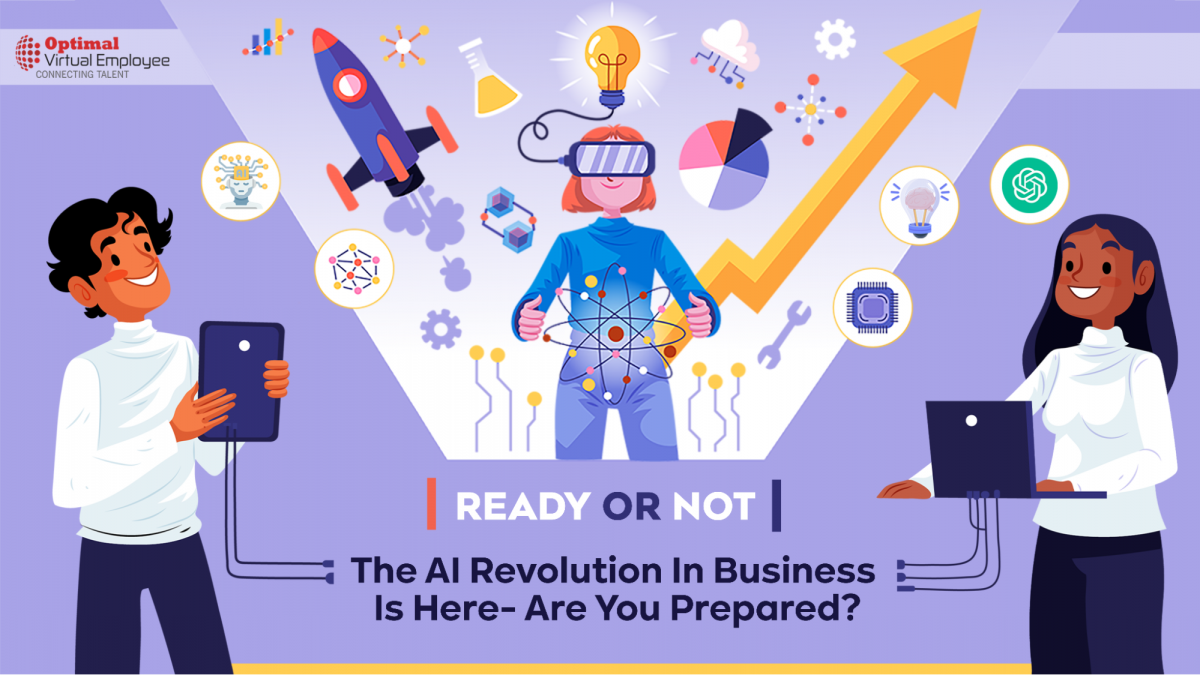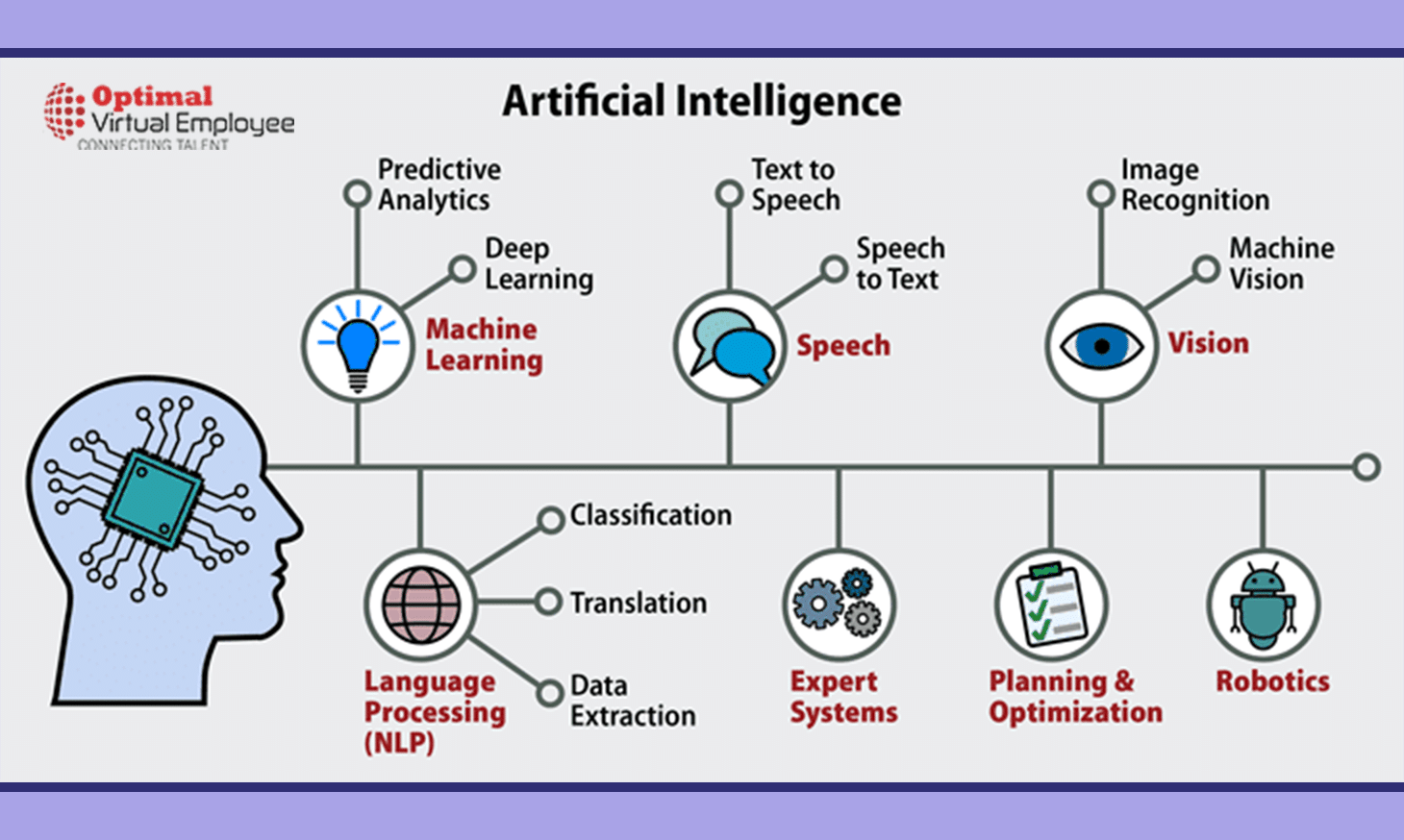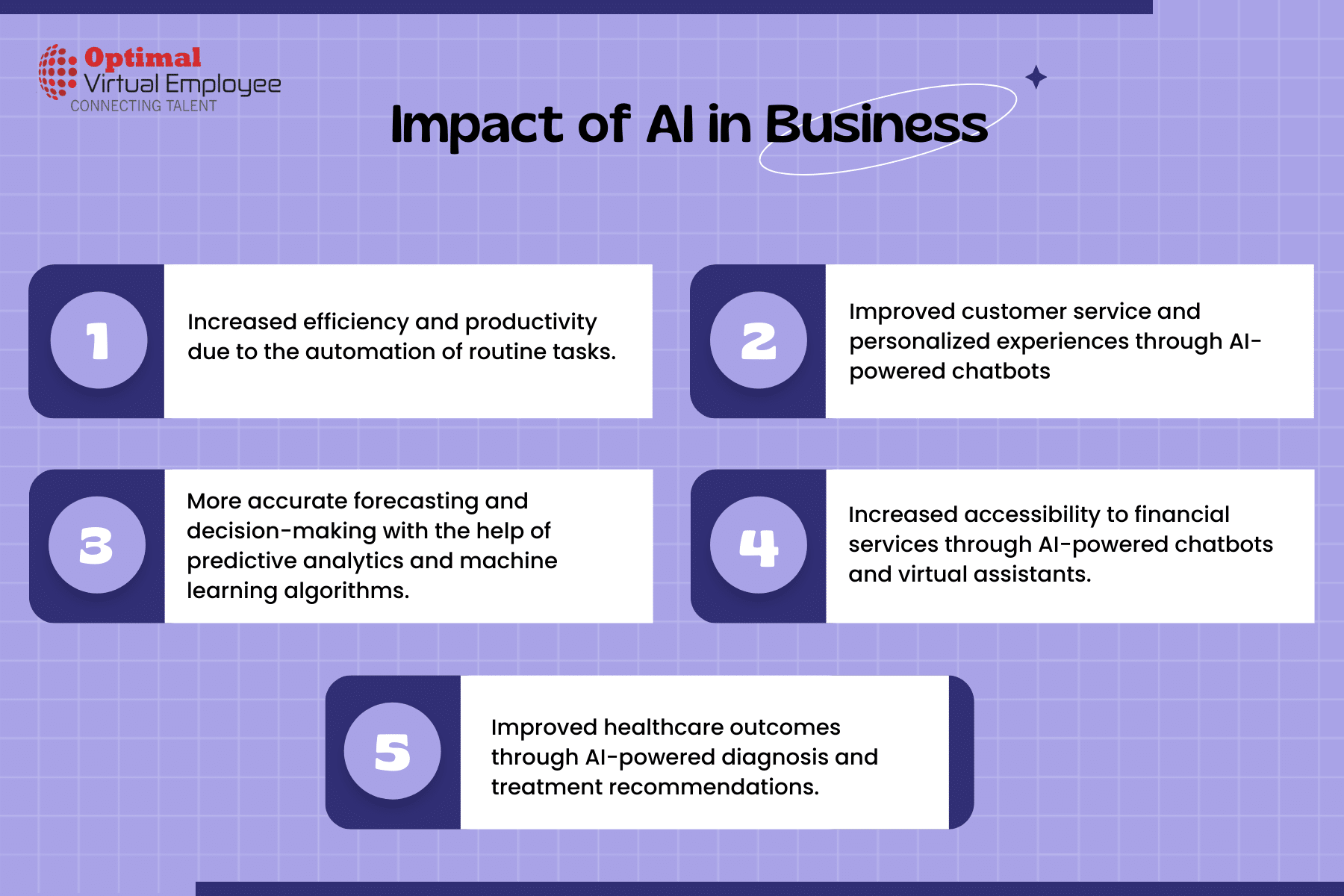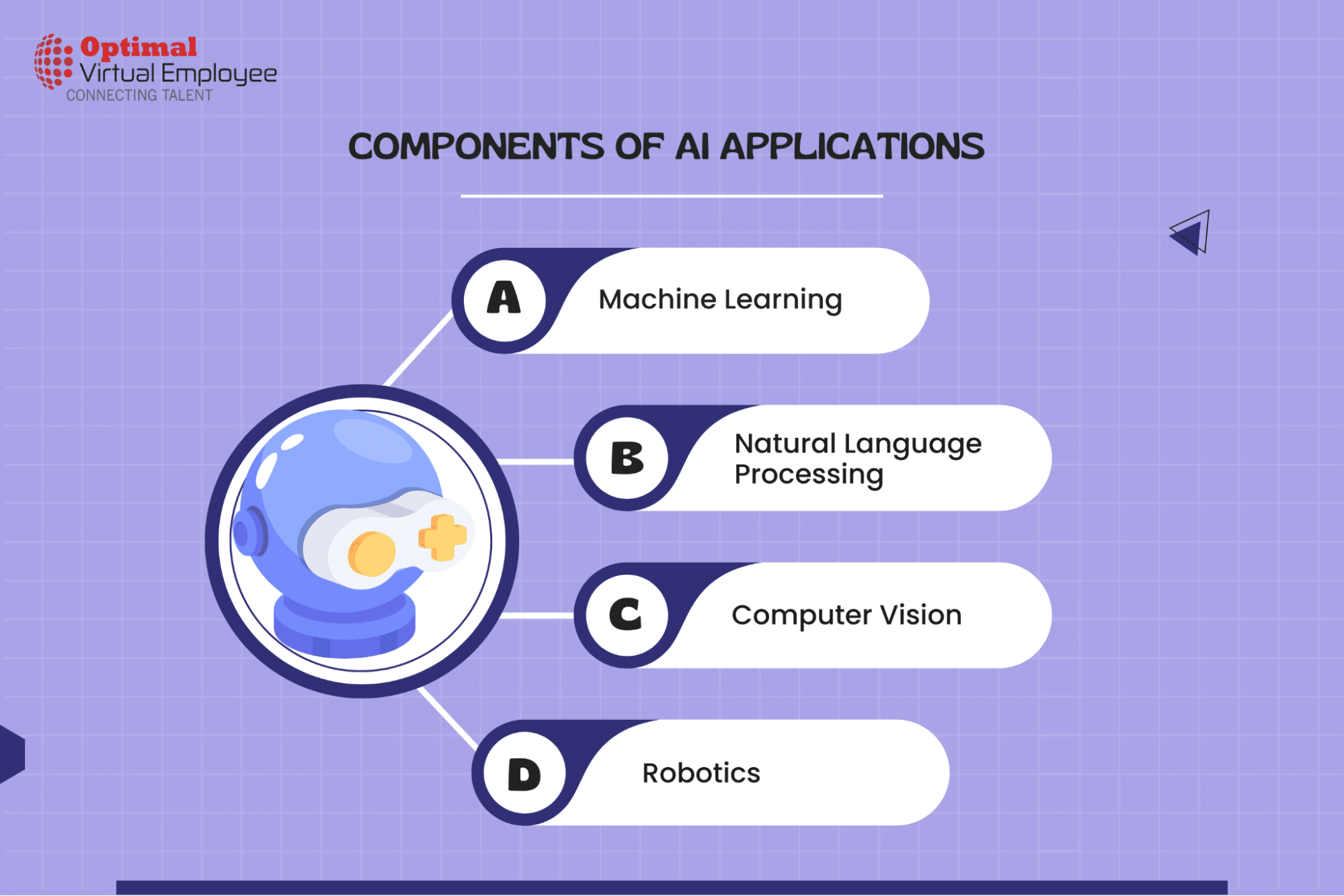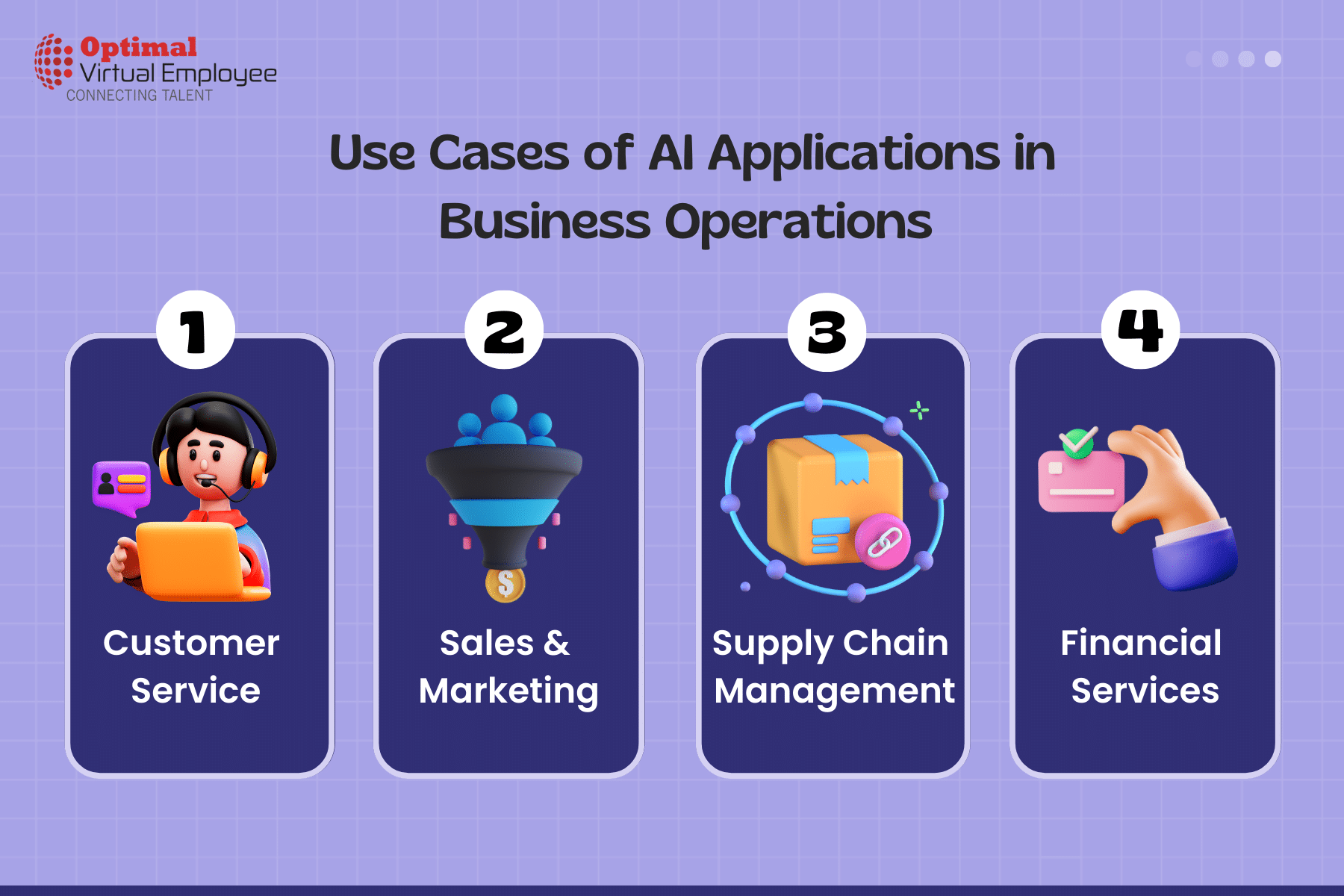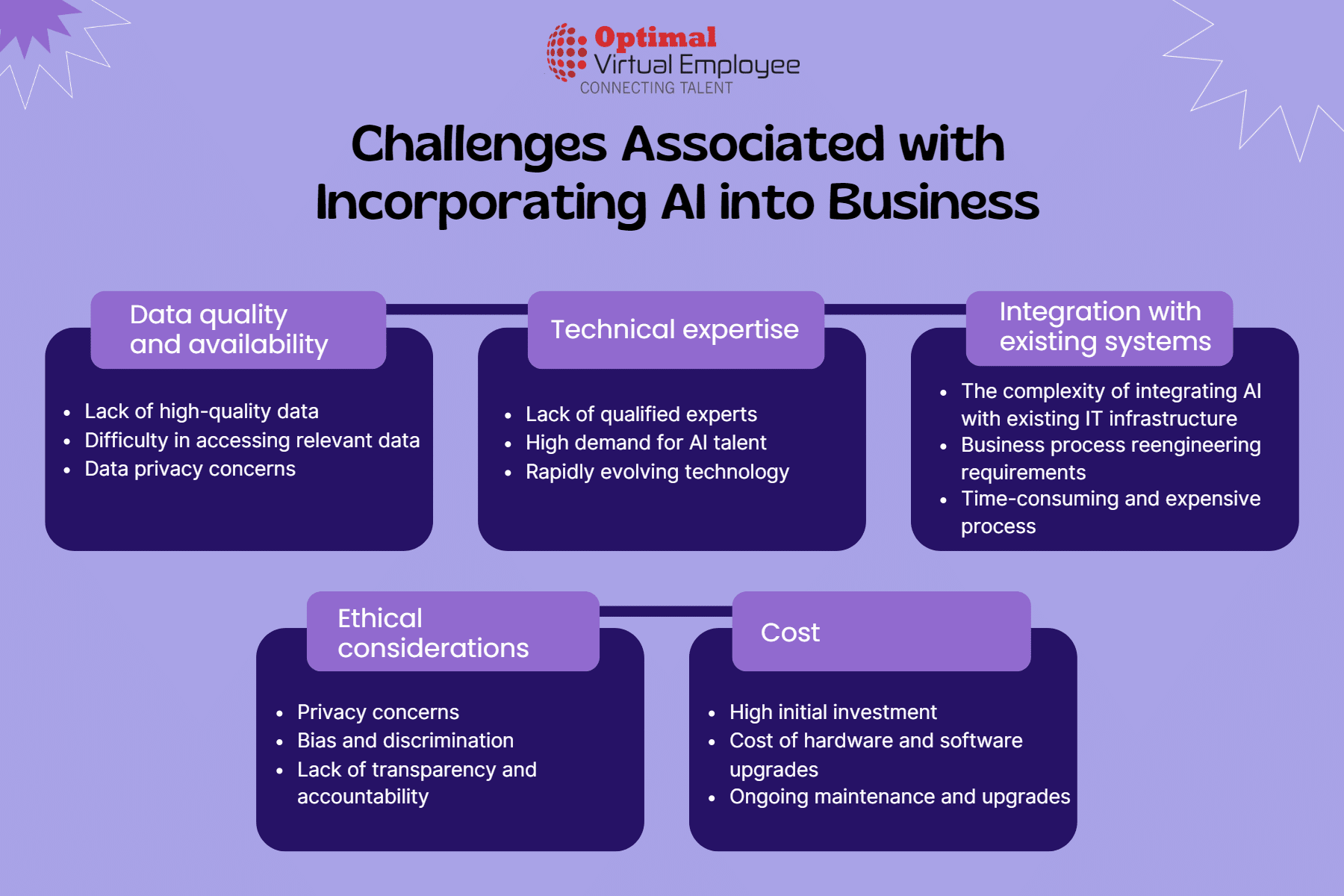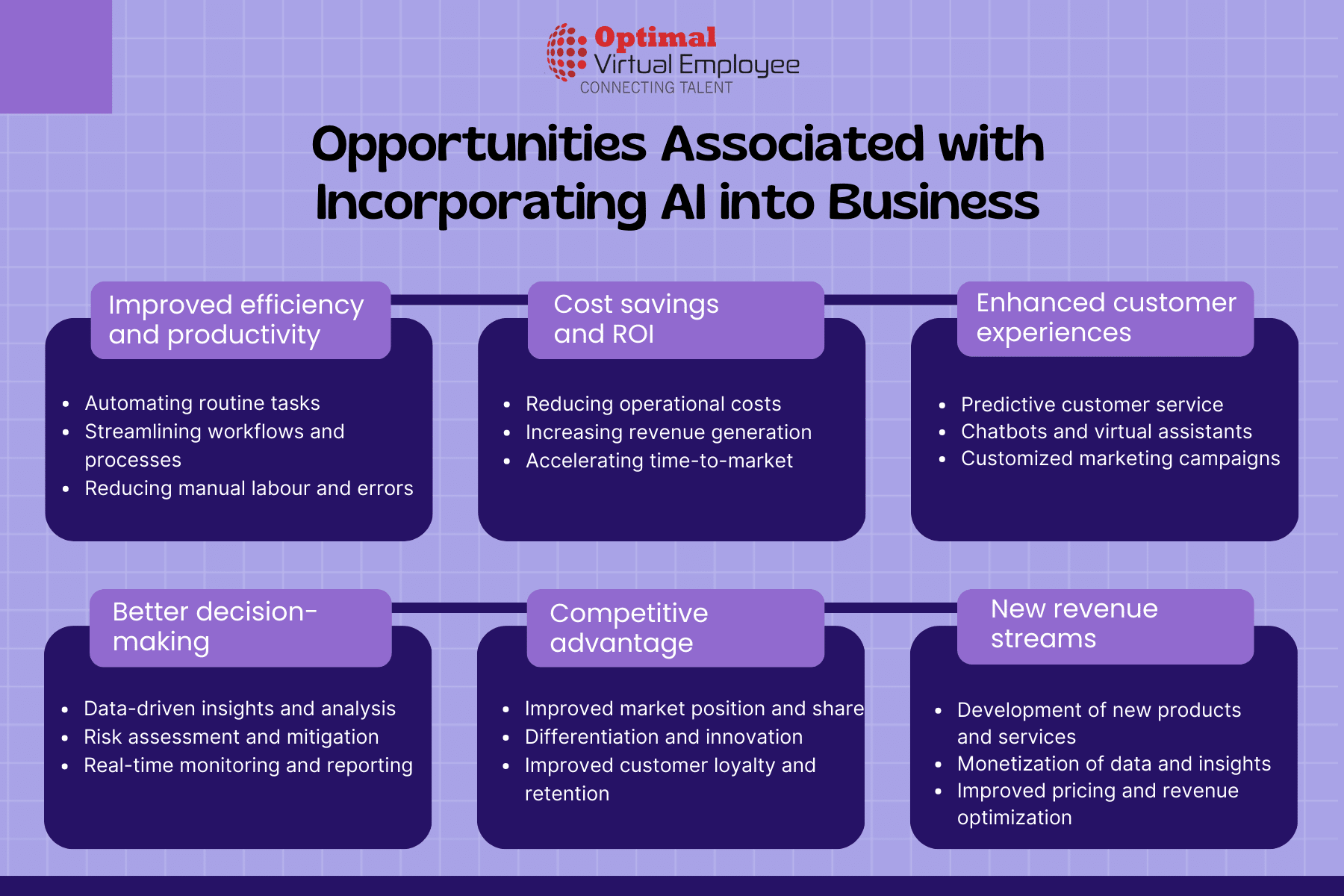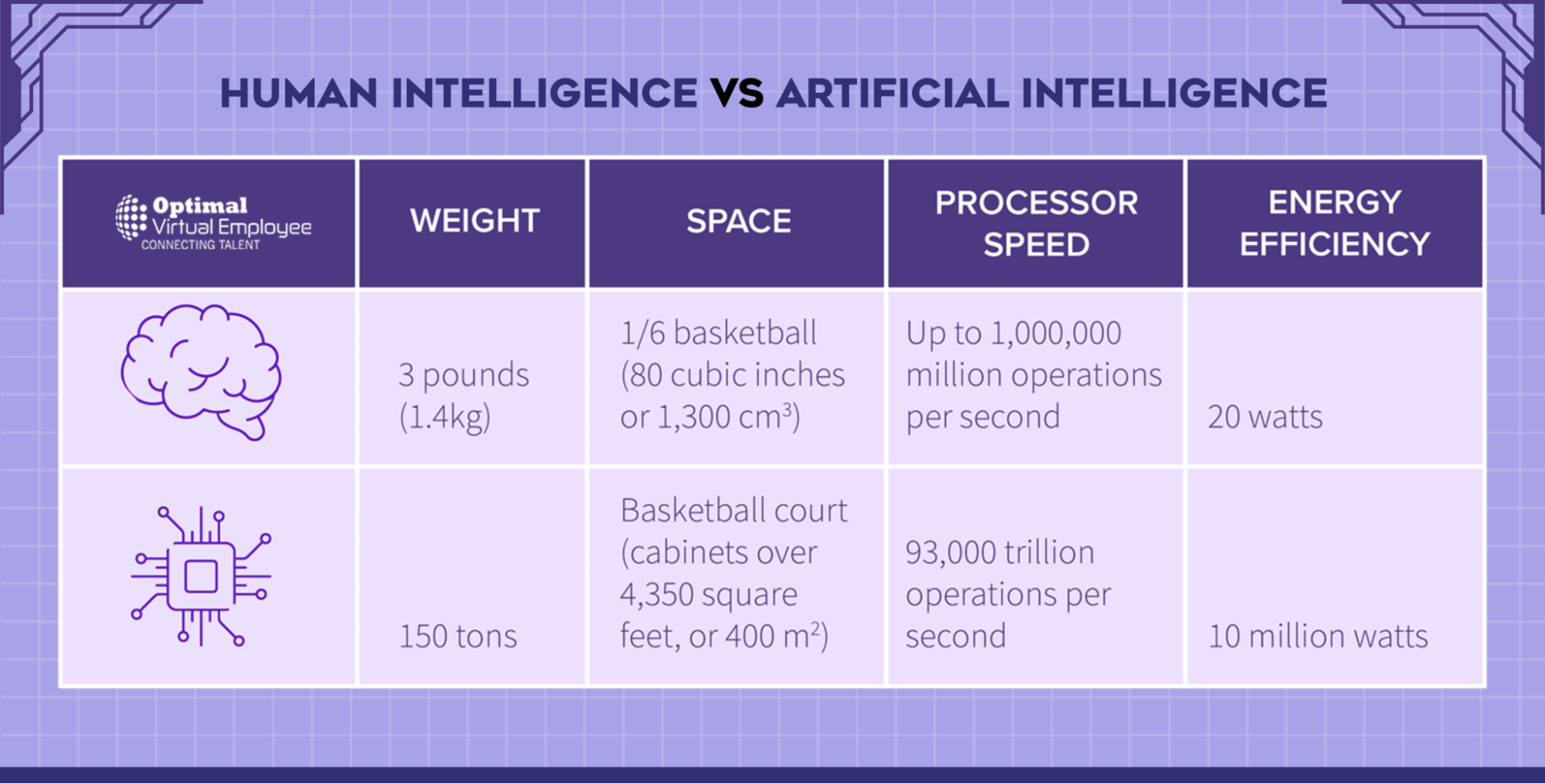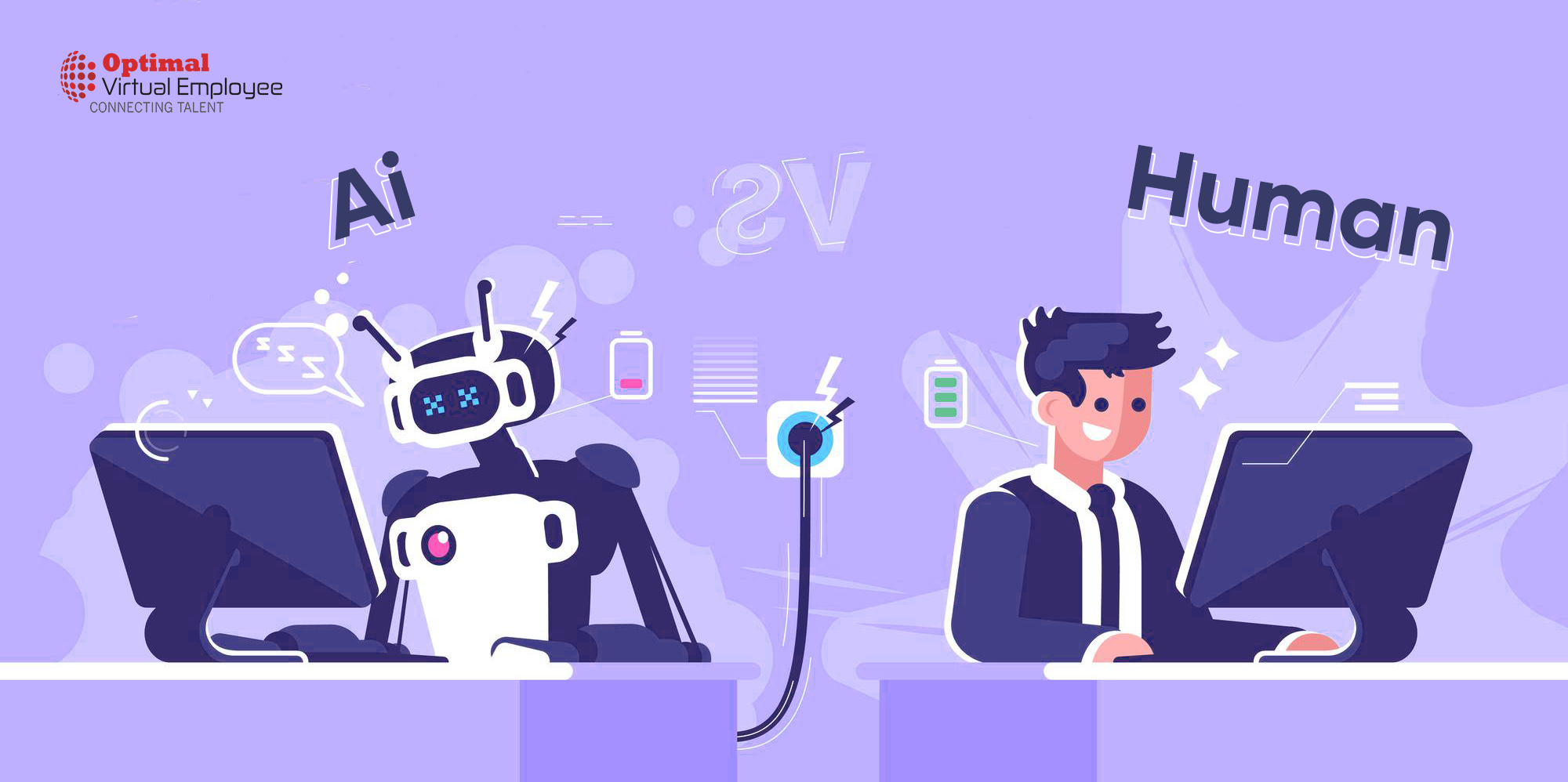As CXOs, the visionary leaders steering their organizations toward success, the question that looms large is: Is your business prepared for the AI revolution that is already upon us?
In this age of unprecedented innovation and disruption, the ability to harness the potential of AI has become a defining factor in determining a company’s survival, growth, and competitive edge.
For CXOs across industries, the rise of AI presents both immense opportunities and profound challenges. As the custodians of their organization’s strategic direction, these leaders must confront the realities of a rapidly changing landscape, where AI-driven technologies have the potential to revolutionize operations, redefine customer experiences, and unlock untapped value.
The question that echoes through boardrooms and executive meetings is: Will your business be a passive spectator or an active participant in this transformative journey?
So, what does it mean for a business to be prepared for the AI revolution? At its core, it requires a mindset shift, a willingness to embrace change, and a commitment to continuous learning.
CXOs must become torchbearers of AI adoption, championing its integration into the fabric of their organization’s DNA. From the corner office to the shop floor, every aspect of the business must be primed to leverage AI’s transformative capabilities.
As we move forward, it is becoming increasingly clear that AI is not just a technology but a business strategy. To stay ahead of the competition, companies must be prepared to embrace AI and use it to their advantage. They must invest in the right tools, hire skilled professionals, and create a culture of innovation to reap the benefits of AI.
In this blog, I will take you through the AI revolution in business, its impact on various industries, and the challenges and opportunities businesses face in embracing this technology.
Whether you are a small startup or a large corporation, the AI revolution is here, and the question is, are you ready?
What Is AI & Its Potential Impact On Business
Starting from the very basic, AI stands for Artificial Intelligence, which refers to the development of computer systems that can perform tasks that normally require human intelligence, such as perception, reasoning, learning, decision-making, and natural language processing.
The potential impact of AI on business is significant. AI technologies can improve the efficiency, accuracy, and speed of business processes, leading to increased productivity and cost savings.
For example, AI-powered chatbots can provide customer support and sales assistance 24/7, while AI-based algorithms can optimize supply chain management, reduce waste, and improve forecasting accuracy.
AI can also enhance decision-making capabilities by providing businesses with insights and predictions based on large amounts of data, helping to identify trends, opportunities, and potential risks. Additionally, AI-powered tools can be used for tasks such as fraud detection, cybersecurity, and predictive maintenance, which can improve operational performance and minimize risks.
However, the impact of AI on business is not without potential challenges and ethical considerations.
For example, AI could lead to job displacement, exacerbate existing biases and inequalities, and raise concerns about privacy and data protection. Therefore, businesses need to carefully consider the potential benefits and risks of AI and implement ethical and responsible AI practices to ensure that its use aligns with societal values and expectations.
Understanding The Components Of AI Applications & Their Use Cases In Business Operations
Artificial Intelligence (AI) is revolutionizing the business landscape, enabling organizations to automate and optimize their operations. From improving customer experience to streamlining supply chain management, AI has become an essential tool for modern businesses. However, to fully leverage the potential of AI, it is essential to understand its various components and use cases.
Components of AI Applications:
Machine Learning (ML):
Machine Learning is a subset of AI that enables machines to learn from data and improve their performance over time without being explicitly programmed. It involves training algorithms on large datasets to identify patterns and make predictions. ML can be used for a variety of tasks, including image and speech recognition, natural language processing, and predictive analytics.
Use Cases:
Predictive Maintenance: ML algorithms can analyze data from sensors and predict when equipment is likely to fail, allowing maintenance teams to schedule repairs before the issue becomes critical.
Personalized Marketing: ML algorithms can analyze customer data to predict their preferences and tailor marketing messages to individual customers.
Fraud Detection: ML algorithms can analyze transaction data to identify patterns of fraudulent activity and alert security teams to potential threats.
Natural Language Processing (NLP):
Natural Language Processing is a branch of AI that focuses on enabling machines to understand and interpret human language. It involves teaching machines to recognize speech, understand written text, and generate natural language responses.
Use Cases:
Chatbots: NLP algorithms can power chatbots, enabling customers to interact with businesses through text or voice interfaces.
Sentiment Analysis: NLP algorithms can analyze social media posts and customer reviews to determine how people feel about a product or brand.
Language Translation: NLP algorithms can translate text from one language to another, making it possible for businesses to communicate with customers around the world.
Computer Vision (CV):
Computer Vision is a subset of AI that focuses on enabling machines to interpret visual information from the world around them. It involves teaching machines to recognize objects, faces, and other visual patterns.
Use Cases:
Quality Control: CV algorithms can analyze images of products to identify defects and ensure that they meet quality standards.
Autonomous Vehicles: CV algorithms can enable self-driving cars to navigate roads and avoid obstacles.
Security: CV algorithms can analyze video footage to identify potential security threats and alert security teams.
Robotics:
Robotics is a branch of AI that focuses on enabling machines to perform physical tasks autonomously. It involves teaching machines to sense and interact with the physical world.
Use Cases:
Manufacturing: Robotics can automate assembly lines and perform repetitive tasks, increasing efficiency and reducing costs.
Logistics: Robotics can be used in warehouses to move and sort products, improving supply chain management.
Healthcare: Robotics can assist with surgery and other medical procedures, reducing the risk of human error.
Use Cases of AI Applications in Business Operations:
Customer Service:
AI-powered chatbots can provide 24/7 customer support, answering frequently asked questions and resolving issues in real time. This can improve customer satisfaction and reduce the workload on customer service teams.
Sales and Marketing:
AI-powered predictive analytics can identify potential customers and recommend personalized marketing messages, increasing conversion rates and sales. AI-powered chatbots can also be used to engage with customers and recommend products based on their preferences.
Supply Chain Management:
AI-powered predictive analytics can be used to forecast demand and optimize inventory levels, reducing costs and minimizing waste. Robotics can also be used to automate warehouse operations and improve logistics.
Financial Services:
AI-powered fraud detection can analyze transaction data and identify potential fraudulent activity, reducing the risk of financial losses. AI-powered predictive analytics can also be used to identify potential investment opportunities and recommend portfolio adjustments.
AI has become an essential tool for modern businesses to automate and optimize their operations. To fully leverage the potential of AI, it is essential to understand its various components and use cases. Machine Learning (ML), Natural Language Processing (NLP), Computer Vision (CV), and Robotics are the four main components of AI applications, each with its own set of use cases.
Exploring The Challenges & Opportunities Associated With Incorporating AI Into Business
Artificial intelligence (AI) has the potential to revolutionize the way businesses operate. It has the ability to process large amounts of data, analyze it, and provide insights that can help companies make better decisions, increase efficiency, and reduce costs.
However, incorporating AI into business is not without its challenges. Let’s quickly explore the challenges and opportunities associated with incorporating AI into business.
Challenges Associated with Incorporating AI into Business
Data Quality: AI requires high-quality data to function effectively. If the data is incomplete, inaccurate, or biased, it can result in incorrect predictions and decisions.
Integration: Incorporating AI into existing business processes can be a complex task. It requires integration with existing systems and processes, which can be time-consuming and expensive.
Skills Gap: AI requires specialized skills, such as data science and machine learning, which may not be readily available within an organization. Companies may need to hire new talent or train existing employees to fill this gap.
Ethical Considerations: AI can raise ethical concerns, such as data privacy and bias. Companies need to be aware of these issues and take appropriate measures to address them.
Cost: Implementing AI can be expensive, especially for small businesses. The cost of acquiring hardware, software, and specialized talent can be prohibitive.
Opportunities Associated with Incorporating AI into Business
Improved Efficiency: AI can automate repetitive tasks, allowing employees to focus on more strategic work. This can lead to increased productivity and efficiency.
Better Decision Making: AI can analyze large amounts of data and provide insights that humans may miss. This can help companies make better decisions, reduce risk, and increase profitability.
Enhanced Customer Experience: AI can help companies provide personalized experiences to their customers. For example, chatbots can answer customer queries quickly and efficiently, improving customer satisfaction.
Competitive Advantage: Incorporating AI into business can give companies a competitive advantage. It can help them identify opportunities and stay ahead of the competition.
New Revenue Streams: AI can help companies identify new revenue streams. For example, a company that collects large amounts of data can use AI to analyze it and sell insights to other companies.
Incorporating AI into business has its challenges, but the potential benefits are significant.
Companies that can overcome these challenges and effectively incorporate AI into their business processes can gain a competitive advantage, improve efficiency, and increase profitability.
As AI technology continues to evolve, the opportunities for businesses to leverage it will only increase.
Implications Of AI Transformation In Specific Industries
Artificial Intelligence (AI) is rapidly transforming various industries by enhancing efficiency, accuracy, and productivity while reducing costs and human errors. The implications of AI transformation in specific industries are significant and vary depending on the sector and the scope of application.
For example, in healthcare, AI is being used for medical diagnosis, drug discovery, and personalized treatments. In finance, AI is transforming the way businesses operate by enabling predictive analytics, fraud detection, and automation of routine tasks. In transportation, AI is being used to optimize logistics, improve safety, and enhance the overall customer experience.
Agriculture
The agriculture industry is one of the most important industries in the world, responsible for producing the food we eat and supporting rural economies. With the growing population, the industry needs to produce more food to meet the demand. Artificial intelligence (AI) has the potential to transform the agriculture industry by improving efficiency, productivity, and sustainability.
Here are some of the implications of AI transformation in agriculture:
Precision Farming: AI can help farmers to make better decisions by analyzing data from various sources such as weather patterns, soil moisture levels, and plant health. This information can be used to optimize planting patterns, irrigation schedules, and fertilization, resulting in higher yields and reduced costs.
Autonomous Farming: AI can automate many farming tasks such as planting, harvesting, and spraying. This can reduce labour costs, increase efficiency, and improve safety by eliminating the need for human operators in hazardous situations.
Soil Management: AI can help farmers to manage soil health by analyzing soil samples and providing recommendations for fertilization and crop rotation. This can improve crop yields and reduce the need for chemical fertilisers.
Livestock Management: AI can help farmers to monitor the health and behaviour of livestock by analyzing data from sensors and cameras. This can improve animal welfare and reduce the risk of disease outbreaks.
Supply Chain Optimization: AI can optimize the supply chain by predicting demand, improving logistics, and reducing waste. This can help farmers to get their products to market more efficiently and reduce costs.
Education
The transformation of the education industry through the integration of artificial intelligence (AI) technology has the potential to revolutionize the way students learn and how educators teach.
Here are some of the implications of AI transformation in the education industry:
Personalized Learning: AI-powered systems can analyze data on individual students’ learning patterns, strengths, and weaknesses to provide personalized learning experiences that are tailored to their needs. This will enable educators to better address the needs of each student and provide them with the support they require to succeed.
Improved Learning Outcomes: AI technology can be used to assess students’ understanding of concepts in real time, identifying gaps in their knowledge and providing feedback to help them improve. This can lead to better learning outcomes and increased student engagement.
Enhanced Student Support: AI-powered systems can provide students with support outside of the classroom, offering personalized study recommendations, answering questions, and providing feedback on assignments. This can help students to stay motivated and engaged in their learning.
Streamlined Administrative Processes: AI technology can automate administrative tasks such as grading, scheduling, and record-keeping, freeing up educators to focus on teaching and providing support to students.
Accessible Education: AI technology can provide access to education for students who are unable to attend classes in person, such as those who live in remote areas or who have disabilities. This will enable more students to receive a quality education and level the playing field for all learners.
-
Finance
The application of Artificial Intelligence (AI) in the finance industry is transforming the way financial institutions operate, with significant implications for the industry and the broader economy.
Here are some of the key implications of AI transformation in the finance industry:
Improved operational efficiency: AI can automate routine tasks, such as data entry, reconciliation, and fraud detection, freeing up human resources to focus on more complex tasks. This can result in faster and more accurate decision-making, reduced operational costs, and improved customer service.
Enhanced risk management: AI can help financial institutions better assess and manage risk by analyzing vast amounts of data from multiple sources in real time. This can lead to more informed investment decisions, reduced exposure to risk, and improved regulatory compliance.
Increased accuracy of credit decisions: AI algorithms can analyze large volumes of data to accurately assess credit risk and determine the likelihood of loan defaults. This can lead to better credit decisions, reduced loan defaults, and improved profitability for financial institutions.
Enhanced customer experience: AI can help financial institutions provide personalized services and products to customers based on their preferences and behaviour. This can lead to increased customer satisfaction and loyalty.
Increased competition: The use of AI is lowering barriers to entry and enabling new players to enter the market, increasing competition for established financial institutions.
Government
The application of AI transformation in the government industry has the potential to revolutionize how public services are delivered and how government agencies operate.
Here are some examples of how AI is being used in the government sector:
Citizen Services: AI-powered chatbots are being used to assist citizens with their queries and provide them with information on various government services. For example, the city of New York has implemented a chatbot called “NYC Digital Assistant” which provides 24/7 support to citizens on a range of topics.
Fraud Detection: Government agencies are using AI to detect fraudulent activities and transactions. AI algorithms can analyze large datasets and identify patterns that indicate fraudulent behaviour. This is particularly useful in the financial and healthcare sectors.
Public Safety: AI technologies are being used to enhance public safety by detecting and preventing crime. For instance, the use of facial recognition technology can help law enforcement agencies identify suspects and track their movements.
Resource Management: AI can be used to optimize resource management and reduce waste in government operations. For example, AI-powered systems can analyze data on energy consumption and suggest ways to reduce energy usage in government buildings.
Decision-Making: AI can support government decision-making by providing real-time insights and predictive analytics. This can help policymakers make informed decisions based on data-driven insights rather than intuition.
Overall, the use of AI in the government sector can improve efficiency, reduce costs, and enhance citizen services. However, it is important to balance the benefits of AI with concerns about privacy, ethics, and transparency.
-
Healthcare
Artificial Intelligence (AI) has the potential to transform the healthcare industry in numerous ways.
Here are some of the key areas where AI is already being applied or has the potential to be applied:
Medical Image Analysis: AI can analyze medical images such as CT scans, MRIs, and X-rays to assist radiologists and clinicians in diagnosing diseases and injuries. AI can help detect and identify abnormalities that may be missed by human analysis, leading to more accurate and timely diagnoses.
Personalized Medicine: AI can be used to analyze large amounts of patient data to identify patterns and make predictions about disease risk and treatment outcomes. This can help clinicians personalize treatment plans for individual patients based on their specific needs and characteristics.
Virtual Assistants and Chatbots: AI-powered virtual assistants and chatbots can provide patients with personalized health information and guidance, as well as assist healthcare providers with administrative tasks such as appointment scheduling and prescription refills.
Medical Research: AI can be used to analyze large amounts of data from clinical trials and research studies, allowing researchers to identify new patterns and insights that may not have been possible with traditional methods.
Robotic Surgery: AI-powered robots can assist surgeons in performing complex procedures with greater precision and accuracy, leading to better outcomes for patients.
Overall, AI has the potential to revolutionize the healthcare industry by improving the accuracy and speed of diagnoses, personalizing treatment plans, accelerating drug discovery, and providing patients with better access to personalized health information and guidance.
Connecting Technology With Humans: Human + AI Interactions
Technology has revolutionized the way we live, work, and interact with the world around us. Artificial intelligence (AI) is one of the most significant technological advancements of our time, and it is transforming many industries, including healthcare, finance, and transportation. However, as AI becomes more ubiquitous in our lives, it is essential to consider how it can be connected with humans in a meaningful way.
The term “human + AI interaction” refers to the ways in which humans and AI systems can work together to achieve common goals. It involves designing interfaces, interactions, and experiences that enable seamless collaboration between humans and machines.
Challenges of Human + AI Interaction
One of the biggest challenges of human + AI interaction is designing interfaces that are intuitive and easy to use. AI systems are incredibly complex, and their inner workings are often opaque to humans. Therefore, designing interfaces that enable humans to interact with AI systems in a meaningful way can be challenging.
Another challenge of human + AI interaction is building trust between humans and AI systems. Trust is critical in any collaborative relationship, and this is especially true when it comes to human + AI interaction. People need to feel that they can rely on AI systems to make the right decisions and provide accurate information.
A third challenge of human + AI interaction is ensuring that AI systems are inclusive and equitable. AI systems can perpetuate bias and discrimination, particularly when they are trained on biased data sets. Therefore, it is essential to design AI systems that are inclusive and that take into account the diversity of human experiences.
Opportunities for Human + AI Interaction
Despite these challenges, human + AI interaction offers many opportunities. One of the most significant opportunities is to create more efficient and effective systems. AI systems can perform many tasks faster and more accurately than humans, and when combined with human expertise, they can achieve even greater results.
Another opportunity of human + AI interaction is to enhance the quality of life for humans. AI systems can be used to monitor and manage health conditions, provide personalized recommendations, and even provide companionship for people who are socially isolated.
Finally, human + AI interaction can lead to the development of new and innovative products and services. By combining human creativity with the analytical power of AI, we can create new solutions to old problems and develop entirely new ways of doing things.
Wrapping Up
The AI revolution in business has arrived and its impact is being felt across industries worldwide. According to a recent survey, 85% of business executives believe that AI will significantly change the way their businesses operate in the next five years. Additionally, 75% of enterprises are already investing in AI or plan to do so within the next three years.
Therefore, it is clear that the AI revolution in business is here, and companies that are not prepared risk being left behind. To stay competitive, businesses must embrace AI technologies, develop their AI strategies, and invest the necessary resources and talent to support the implementation of AI solutions.
The time to act is now, and companies that are quick to adapt to this new paradigm will be best positioned to reap the benefits of the AI revolution in business.
